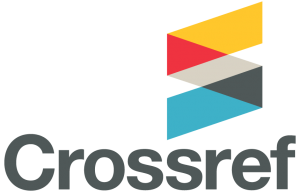With the emergence of the Internet, articles became clickable as URLs were used to link and cite work. But there were two problems. First publishers had to sign hundreds of individual linking agreements with each other—which would have become overwhelming; and second, some URLs began to fail, mainly due to content being moved or URL schemes changing, and could no longer be relied upon.
Enter the Digital Object Identifier (DOI). Unlike a URL, a DOI is a persistent identifier—a life-long reference—that sticks to the content of an online object, not the location, therefore remaining associated with the work, irrespective of changes to work’s web address. The DOI is associated with a URL, but this can be updated centrally, so it always redirects to the current location of the content.
That central updating happens through Crossref. In the year 2000, Crossref was founded by a group of forward-thinking scholarly publishers who understood the need to provide a collaborative, central reference linking service—using DOIs—which would be accessible to, and governed by, the global scholarly communications community.
Over the years Crossref has evolved and our mission is now broader than just DOIs and Reference Linking. Today, we are a self-sustaining not-for-profit that aims to make all research outputs easy not just to find, cite, and link, but also to assess and reuse. As publishing has evolved beyond just publishers, to encompass libraries, scholars, funders, and more, so has our 10,000+ member base. These organizations continue to guide us through working groups, committees, a broad range of collaborations and thousands of other metadata users.
This introductory blog is the first in a series of five posts from Crossref; over the next few months we’ll be talking to them more in depth about the role of the DOI, particularly in terms of
- visibility and interoperability,
- the identification of different content versions of an article such as preprints, formats and languages,
- options for acquisition, and
- how journals can exploit DOIs using Crossref services.
References
About us [online]. Crossref [viewed 17 July 2018]. Available from: https://www.crossref.org/about/
The Formation of CrossRef: A Short History [online]. Crossref [viewed 17 July 2018]. Available from: https://www.crossref.org/pdfs/CrossRef10Years.pdf
External links
Digital Object Identifier <https://en.wikipedia.org/wiki/Wikipedia:Digital_Object_Identifier>
Reference Linking <https://www.crossref.org/services/reference-linking/>
About Christine Cormack Wood
Having lived and worked across Asia and the Middle East for almost twenty years, Chrissie has extensive global experience and a truly international outlook. Now based in Oxford, Chrissie is Head of Marketing and Communications for Crossref. Providing strategic and tactical marketing support she helps Crossref meet their educational and awareness objectives—communicating with members and the wider scholarly community to maximize their understanding of Crossref and its services.
Como citar este post [ISO 690/2010]:













Read the comment in spanish, by Javier Santovenia Diaz:
https://blog.scielo.org/es/2018/07/17/por-que-crossref-existe-y-persiste/#comment-41707
Pingback: What we read this week (20 July 2018) – BMJ Digital
Pingback: Registering Digital Object Identifiers (DOIs) for our content | Iriss Evidence Search and Summary Service